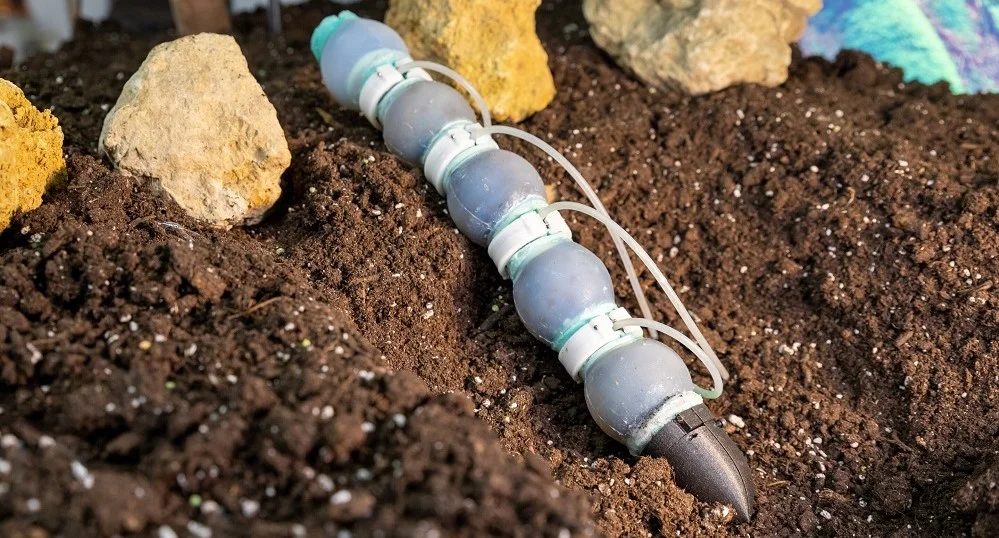A worm robot created for underground exploration
- March 3, 2023
- 0
Inspired by the biology of worms, researchers at the Istituto Italiano di Tecnologia (IIT-Italian Institute of Technology) in Genoa have created a new soft robot that can crawl
Inspired by the biology of worms, researchers at the Istituto Italiano di Tecnologia (IIT-Italian Institute of Technology) in Genoa have created a new soft robot that can crawl

Inspired by the biology of worms, researchers at the Istituto Italiano di Tecnologia (IIT-Italian Institute of Technology) in Genoa have created a new soft robot that can crawl thanks to soft actuators that stretch or contract when air is passed through it. take off Prototype described Scientific Reportsand underground exploration devices, as well as the starting point for indoor search and rescue operations and exploration of other planets.
Nature provides many examples of animals such as snakes, worms, snails, and caterpillars that use both the flexibility of their bodies and the ability to generate physical waves that move through their bodies to move and explore different environments. Some movements are similar to the movements of plant roots. The primary goal of the BioInspired Soft robotics lab, coordinated by Barbara Mazzolai, is to take inspiration from nature and develop new technologies while exploring new biological phenomena, and this worm-like robot is the latest invention of her group.
The creation of a worm-like robot was made possible by a deep understanding and application of the worm’s mechanics of motion. They use alternating contractions of the muscle layers to move both above and below the soil surface, creating retrograde peristaltic waves. Individual parts of their bodies (metamers) have a certain amount of fluid that controls internal pressure to exert forces and perform independent, localized and variable movements. The current prototype of the worm movement is 45 cm long and weighs 605 grams.
The IIT researchers studied the morphology of the worms and found a way to mimic the movements of the worms’ muscles, their constant volume coelomic chambers, and the function of their bristle-like hairs (hairs) by creating soft robotic solutions.
The team developed a peristaltic soft actuator (PSA) that implements antagonistic movements of worm muscles; From the neutral position, it stretches when air is pumped into it and contracts when air is removed. The entire body of the worm robot consists of five PSA modules connected by links. The current prototype is 45 cm long and weighs 605 grams.
Each actuator has an elastomeric shell that encloses a known amount of fluid, thus simulating the constant volume of the worms’ inner coelomic fluid. The worm segment shortens longitudinally and expands circumferentially, producing radial forces as the longitudinal muscles of the fixed volume individual chamber contract. Antagonistically, the segment elongates along the anteroposterior axis and tapers circumferentially by contraction of the peripheral muscles, resulting in penetration forces along the axis.
Each actuator exhibits a maximum elongation of 10.97 mm at 1 bar positive pressure and a maximum compression of 11.13 mm at 0.5 bar negative pressure; it is unique in its ability to generate both longitudinal and radial forces in a single actuator module.
In order for the robot to move on a flat surface, small passive friction pads inspired by the hairs of worms are attached to the abdominal surface of the robot. The robot demonstrated improved mobility at a speed of 1.35 mm/s.
This research not only provides a new method for developing a peristaltic worm-like soft robot, but also provides a deeper understanding of movement in a variety of environments from a bio-inspired perspective. The potential applications of this technology are very wide, including underground exploration, excavation, search and rescue operations in underground environments, and exploration of other planets. This biological soft burrowing robot is an important step forward in the field of soft robotics and opens the door for further progress in the future.
Source: Port Altele
As an experienced journalist and author, Mary has been reporting on the latest news and trends for over 5 years. With a passion for uncovering the stories behind the headlines, Mary has earned a reputation as a trusted voice in the world of journalism. Her writing style is insightful, engaging and thought-provoking, as she takes a deep dive into the most pressing issues of our time.